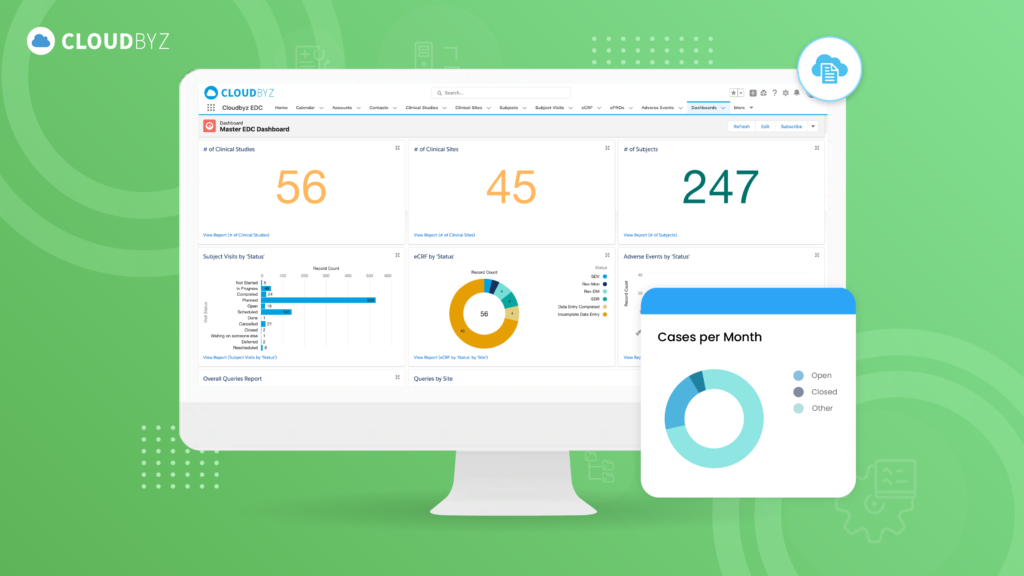
Electronic Data Capture (EDC) systems have transformed the way clinical trials are conducted, especially in the biotech industry. They offer numerous benefits, including enhanced data accuracy, real-time access to information, and streamlined data management processes. However, implementing an EDC system is a complex task that requires careful planning and execution. In this blog, we will explore the best practices for successfully implementing an EDC system in a biotech company and highlight the common challenges you might encounter along the way.
Best Practices for EDC System Implementation
- Define Clear Objectives and Requirements
Before selecting and implementing an EDC system, it is crucial to define clear objectives and requirements. Understand what you aim to achieve with the EDC system, whether it’s improving data quality, reducing costs, or accelerating trial timelines. Engage stakeholders from different departments to gather comprehensive requirements, ensuring the selected system aligns with your overall goals. - Choose the Right EDC System
Selecting the right EDC system is vital for successful implementation. Evaluate different EDC vendors based on factors such as system functionality, ease of use, scalability, integration capabilities, and compliance with regulatory standards. Consider conducting pilot tests with shortlisted systems to assess their performance in real-world scenarios. - Ensure Regulatory Compliance
Compliance with regulatory requirements, such as FDA 21 CFR Part 11, is non-negotiable when implementing an EDC system. Ensure the system you choose complies with all relevant regulations and standards. This includes data security measures, audit trails, and electronic signatures. - Develop a Comprehensive Implementation Plan
A detailed implementation plan is essential for a smooth transition to the new EDC system. This plan should include timelines, milestones, resource allocation, and risk management strategies. Assign a dedicated project manager to oversee the implementation process and ensure all tasks are completed on schedule. - Provide Adequate Training and Support
Proper training is crucial for the successful adoption of the EDC system. Develop a training program tailored to the needs of different user groups, including clinical researchers, data managers, and IT staff. Provide ongoing support to address any issues or questions that arise during and after the implementation phase. - Conduct Thorough Testing
Before fully deploying the EDC system, conduct thorough testing to identify and resolve any issues. This includes user acceptance testing (UAT), system integration testing, and performance testing. Ensure the system functions correctly and meets all defined requirements. - Establish Data Migration Strategies
If transitioning from a legacy system or paper-based processes, establish a robust data migration strategy. This involves mapping existing data to the new system, cleaning and validating data, and ensuring data integrity during the transfer process. - Monitor and Evaluate System Performance
Post-implementation, continuously monitor the EDC system’s performance and gather feedback from users. Evaluate whether the system meets the defined objectives and identify areas for improvement. Regular audits and reviews will help maintain data quality and system efficiency.
Common Challenges in EDC System Implementation
- Resistance to Change
One of the most common challenges in EDC system implementation is resistance to change from staff accustomed to traditional methods. Overcoming this resistance requires effective change management strategies, clear communication of the benefits, and involving staff in the implementation process. - Data Integration Issues
Integrating EDC systems with other clinical trial software, such as Clinical Trial Management Systems (CTMS) and electronic Trial Master Files (eTMF), can be challenging. It’s crucial to ensure the EDC system supports seamless integration and to collaborate closely with vendors to resolve any compatibility issues. A survey revealed that nearly 70% of biotech companies encountered difficulties integrating EDC systems with existing software, highlighting the importance of flexible integration solutions. - Ensuring Data Quality and Integrity
Maintaining data quality and integrity during and after the transition to an EDC system is critical. Implement rigorous data validation and cleaning processes, and ensure continuous monitoring to detect and resolve any data discrepancies. - Budget and Resource Constraints
Implementing an EDC system can be resource-intensive, requiring significant time, money, and manpower. Careful budgeting and resource allocation are essential to avoid cost overruns and ensure the project is completed within the allocated resources. - Regulatory and Compliance Challenges
Navigating the complex regulatory landscape can be challenging. Ensure your EDC system complies with all relevant regulations and standards, and stay updated on any changes in regulatory requirements that may impact your system. - Technical Issues and Downtime
Technical issues, such as system downtime or performance bottlenecks, can disrupt clinical trial operations. Work closely with your EDC vendor to ensure robust technical support and disaster recovery plans are in place.
Implementing an EDC system in a biotech company can significantly enhance clinical trial efficiency, data accuracy, and overall productivity. By following best practices, such as defining clear objectives, selecting the right system, ensuring regulatory compliance, and providing adequate training, you can overcome common challenges and achieve a successful implementation. Continuous monitoring and evaluation will help maintain system performance and drive ongoing improvements, ensuring your EDC system remains a valuable asset in your clinical research endeavors.


